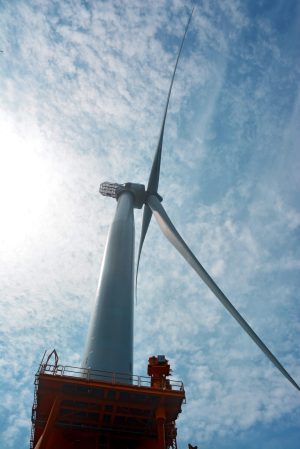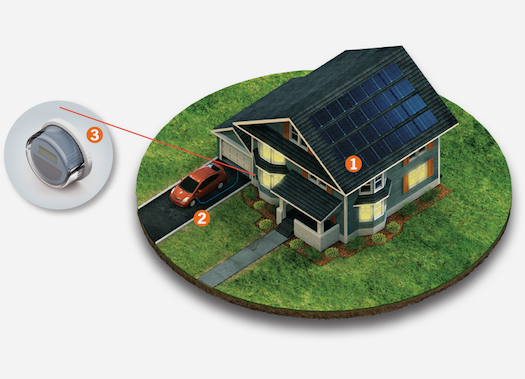

Last February, Uri, also known as the North American winter storm of 2021, brought below-freezing temperatures to the typically mild southern US. The unsuspecting weather-induced rolling blackouts, but in some areas, utilities including heat and water shut off for millions of residents across Texas.
In some lower-income communities across Austin, Texas, pipes burst, and utilities still shut down even after the snow began to melt away. The brutal cold led to more than 240 hypothermia-related deaths, while another assessment outlined that there were potentially hundreds of more deaths from the shutdowns.
“Hundreds of residents still don’t have access to water following the devastation of the winter storm last week, and may be out of service for several more days or even weeks,” said Austin Disaster Relief Network executive director Daniel Geraci in a press release last February. “Burst pipes and other ongoing water issues mean they don’t have access to basic necessities such as showers and cleaning laundry.”
It was more than a week before some households had both their power and water back on. Earlier this month, the state of Texas experienced yet another cold weather front, reminding residents that the state and its elected officials are still woefully unprepared for future extreme weather.
[Related: The US has more power outages than any other developed country. Here’s why.]
Now that a year has passed since the disaster, what has changed? For some, self-preparation is still vital. Monty C. Dozier, the director of the disaster assessment and recovery program at Texas A&M AgriLife Extension Service, told the Texas Tribune earlier this month that Texans should have a “winter kit” in their homes with nonperishable food, a few gallons of water, warm clothes, flashlights and extra batteries in case of outages.
“The thing about winter storms… they’re a lot like a hurricane,” he told The Tribune. “We have a little bit of an extended period (where meteorologists) are forecasting that we’re going to have freezing temperatures and snow accumulations, so it gives a little time to prepare.”
There’s only so much an individual can do to protect themselves in case of a future winter storm, says Cyrus Reed, the conservation director at the Sierra Club’s Lonestar Chapter. This is especially true for poorer sections of the city that have less access to resources for preparation. The shutdowns and last year’s events following the storm showed just how unprepared the state is for extreme weather—and how inequality still exists even between neighborhoods.
Living near a hospital or in a wealthier downtown area means the area’s lights are less likely to be turned off, he says, because those areas are prioritized during rolling blackouts. “So if you’re in one of those fancy-schmancy, really expensive million dollar apartments, you were fine,” he says. “If you were just across the highway… in low income subsidized high rises… your lights were cut off. You had no idea what was going on and looked across the highway at all the lights downtown.”
Reed explains that Texas has a separate grid from the rest of the country, making it harder to import energy from other states during outages. The grid is increasingly stressed not just from extreme weather but from ever-rising energy demand. According to Vox, Texas’ population has increased by about 4 million more people since 2011.
A significant amount of the state’s electricity is powered by fossil fuels. More than 40 percent of the state’s electricity relies on natural gas, and more than 15 percent depends on coal. The rest of the grid uses wind, solar, and nuclear energy, similar to Kansas, which draws about 40 percent of its energy from renewable sources.
Oil and gas companies could not get the appropriate fuel to utilities because of the storm— a significant factor in the rolling blackouts throughout the most affected areas of Texas. “Our electrical system is very dependent on gas,” Reed says.
In November, The Texas Railroad Commission, the three-member board regulating the state’s oil and gas industry, approved a rule outlining that certain natural gas companies must prepare to operate during emergencies. According to The Tribune, certain utilities will not shut off their power during extreme weather. These companies can be designated as “critical,” so a complete shutdown won’t occur during a severe winter storm. Additional rules were put in place requiring utilities to weatherize for potential future winter weather.
[Related: The US could reliably run on clean energy by 2050.]
But some experts are suspicious of these plans—especially considering there is no data to back up current governor Greg Abbott’s confidence that this tactic will work. Allegedly, Abbott didn’t meet with energy CEOs until after the announcement was made, according to reporting by the Texas Tribune.
“Well the governor is betting the weather stays mild, and if it gets cold that the electric utilities are ready to go. There is no evidence that they are,” Ed Hirs, an energy expert with the University of Houston, told a local Fox affiliate in November.
Reed says that there’s a lot of state pride connected behind Texas’ separated grid; he describes it as part of Texas’ identity as the independent “lone star” state. Suppose the state is ever hit by another winter storm (which isn’t super likely this year) or another climate-related event. In that case, it will need to reinforce the grid, which means more connecting to other states and more federal regulation on state energy—which some elected officials are still trying to avoid, according to Reed.
Reed hopes that future preparedness for the state will involve not only upgrading the state’s grid, but also supporting on-the-ground mutual aid groups who filled in significant gaps by providing clean drinking water and nonperishable food to those who went without power.
“I think it’s actually a positive story to see how people actually came together— so many people were in the dark and they got help,” he says. “[Future storms] call for a more coordinated action in the future. One that includes those small organizations, the state government can use those organizations to help more people.”














